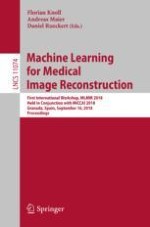2018 | OriginalPaper | Chapter
Detecting Anatomical Landmarks for Motion Estimation in Weight-Bearing Imaging of Knees
Authors : Bastian Bier, Katharina Aschoff, Christopher Syben, Mathias Unberath, Marc Levenston, Garry Gold, Rebecca Fahrig, Andreas Maier
Published in: Machine Learning for Medical Image Reconstruction
Publisher: Springer International Publishing
Activate our intelligent search to find suitable subject content or patents.
Select sections of text to find matching patents with Artificial Intelligence. powered by
Select sections of text to find additional relevant content using AI-assisted search. powered by
